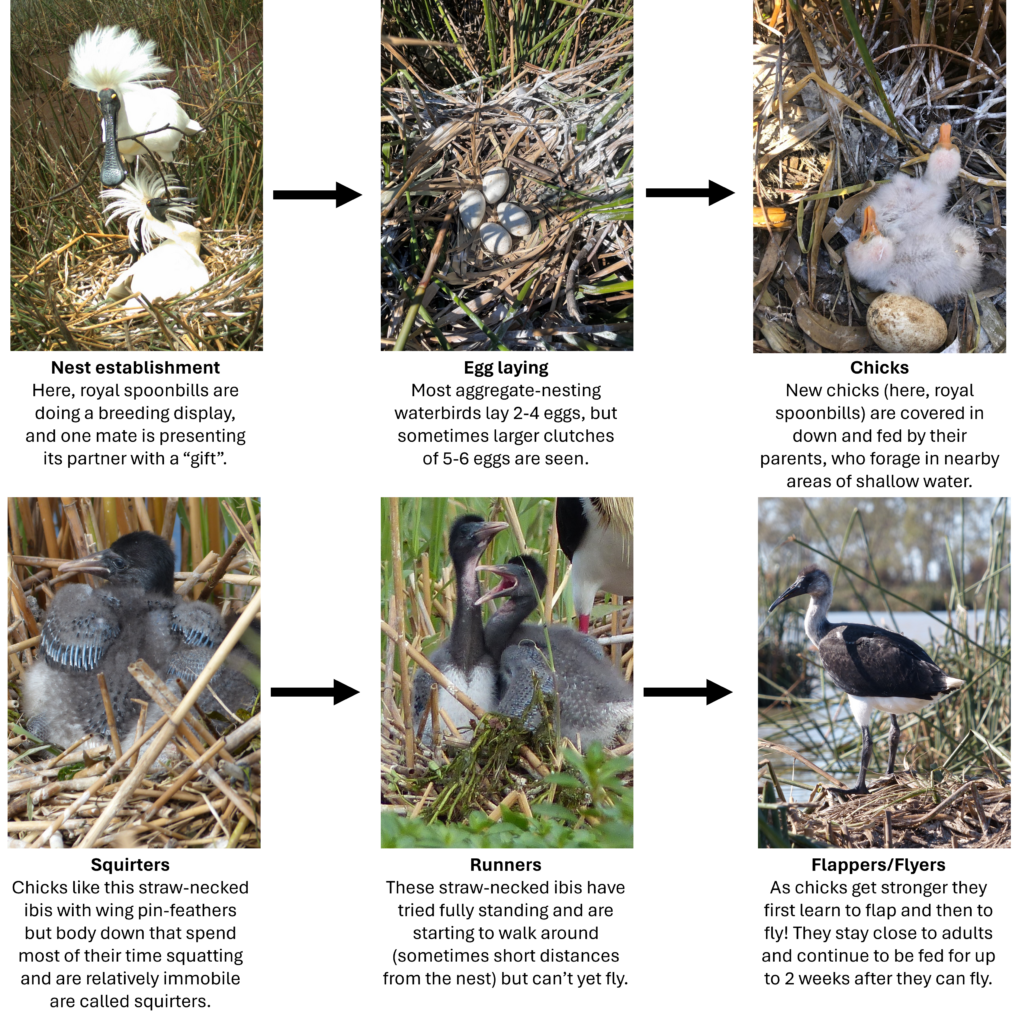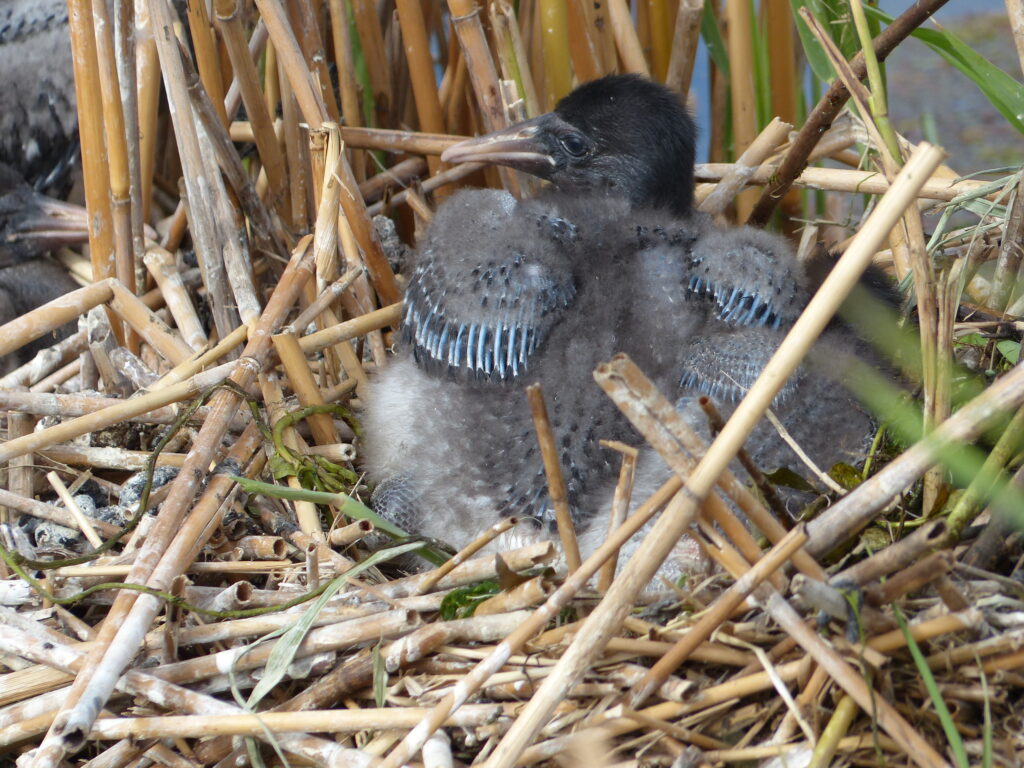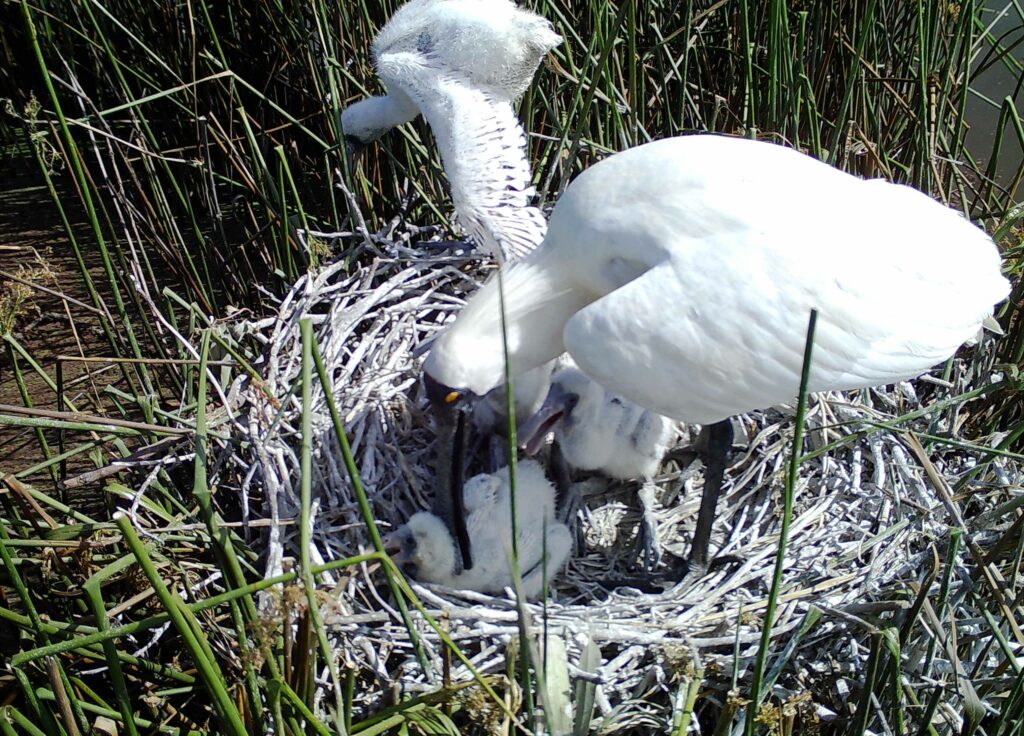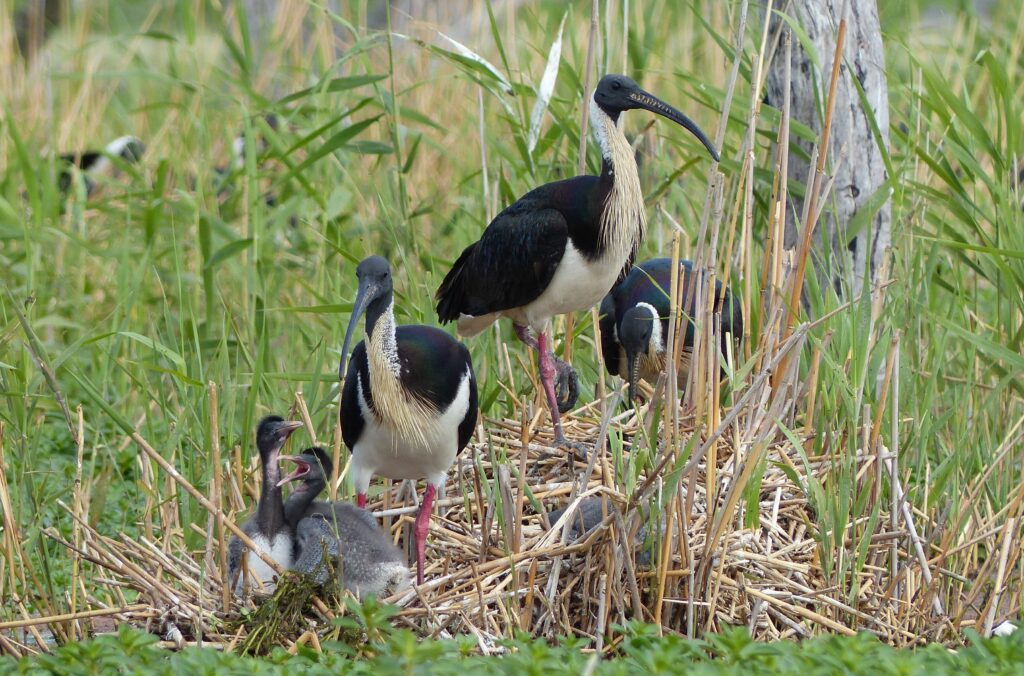Waterbird nesting
Water brings life for these large group nesters
Many of Australia’s inland waterbirds nest in large groups and are therefore known as ‘aggregate-nesting’ species. Some nesting aggregations are vast in size – at the largest sites there can be over 100,000 nests!
Waterbird nesting aggregations are highly dependent on key wetland sites being flooded, and multiple aspects of flooding are crucial:
- The location of flooding is important because nesting comes with specific habitat requirements. For example, straw-necked ibis and royal spoonbills usually build their nests in dense patches of lignum, reeds or rushes. They trample a platform with their big feet to make a nest. Other species like egrets and yellow-billed spoonbills usually nest in trees above water.
- The depth of flooding is important because water surrounding nests provides protection from predators, but species that nest close to the water can experience nest flooding if the water depth gets too high. Water depth also influences food availability for these birds because they generally wade in shallow water to feed. Adult birds may abandon their nests and chicks may be susceptible to predation if the water level drops too quickly.
- The duration of water inundation is also critical because waterbirds need food to be available throughout the nesting cycle – including nest establishment, egg laying, incubation, and chick rearing. Waterbirds may abandon nests or experience reduced nest success if inundation doesn’t last long enough.
Our team is working hard to better understand the nesting ecology and requirements of aggregate-nesting waterbirds to inform water management and support successful waterbird breeding in the Murray Darling Basin.

Royal spoonbill on its nest made of rushes surrounded by water.
Waterbird nest stages
The nesting cycle of waterbirds has several distinct periods:

Take a look at the “Ibis: fledging to flock” webpage to see an artist’s rendition of the straw-necked ibis breeding cycle.
What can movement tracking tell us about waterbird nesting?
Our team’s satellite tracking of three aggregate-nesting waterbird species – straw-necked ibis, Australian white ibis, and royal spoonbill, has enhanced knowledge about the nesting ecology of aggregate nesters in inland Australia with important implications for water management.
Nest attendance
One of the most interesting things we have learned from the tracking data of nesting birds is that there are clear changes in nest attendance and feeding movement patterns that closely correspond with transitions between each nest stage:
- Nest establishment – this period generally lasts for just under a week and is characterised by almost continual attendance at the nest location.
- Incubation – this period lasts about 3 weeks and is characterised by a regular and predictable nest attendance and foraging pattern. For example, straw-necked ibis take turns incubating the eggs, with a swap of which adult is on the nest occurring approximately every 24 hours. When an adult leaves the nest (something that occurs every other day), it usually departs in the afternoon and spends a night in an area away from the nest, where it feeds in the preceding afternoon and following morning.
- Immobile chicks (i.e. new chicks and squirters) – chicks are usually immobile for about a week and a half and attendance behaviour is different between species. For parent straw-necked and Australian white ibis, this stage is characterised by shorter and more frequent trips to feeding areas and a reduction in the number of hours spent at the nest per visit.
- Mobile chicks (i.e. flappers and flyers) – this stage lasts for a month or longer depending on the species. During this time, parents spend more time away from the nest feeding and fewer hours at the nest when they visit. Chicks also start to move away from their actual nest to ‘crèche’ or nursery areas, where chicks spend time in large groups.

An immobile straw-necked ibis chick. When ibis chicks are this age their parents take short, frequent trips to foraging areas to find food for the chicks, and spend less time at the nest than they do during egg incubation.
Foraging distance and habitats
Another very useful outcome from our research on waterbird movements is a greatly increased understanding of how far waterbirds travel to forage when they are nesting and some of the characteristics of their foraging habitat.
One reason for tracking both royal spoonbills and straw-necked ibis is that they have different foraging strategies. Spoonbills are ‘obligate wetland-feeders’ meaning that they can only find food when there is surface water available. On the other hand, straw-necked ibis are more ‘generalist’ in their feeding style and can find food in terrestrial environments (that is, on dry land) as well as in the water. Tracking both species means we can see whether they have different requirements, and it turns out that they do!
Obligate feeders (the spoonbills) travel significantly shorter distances from their nests to forage than generalist non-obligate feeders (e.g. ibis). On average, royal spoonbills travel 8-9 km to forage when feeding chicks compared with 14-16km (and sometimes >50km!) for straw-necked ibis. Spoonbills and ibis also have different preferred foraging habitat, with the former preferring permanent water bodies (lakes or wetlands) and the latter preferring river or floodplain zones.
This is useful information because it suggests that breeding sites with active nesting birds that have relatively less available preferred feeding habitat than other sites might really benefit from environmental water. It could help to ensure that there is enough foraging habitat (especially for obligate wetland-feeders) throughout the nesting cycle, so that parents can successfully raise their chicks through to independence.

Adult royal spoonbill (an obligate wetland-feeder) tending to young chicks at the nest. Because of their feeding style, spoonbills require surface water close to the nest to feed their chicks.
As you can see, studying the detailed tracking data of Australian waterbirds has really helped us to understand their nesting behaviour and feeding movements and requirements during nesting! This will help water managers to help support successful breeding of Australia’s inland aggregate-nesting waterbirds.
Animation showing the movements of Han Solo, an adult male straw-necked ibis, during one of his nesting periods at Kow Swamp in Victoria. You can see that he sometimes travelled a significant distance from the nest site to find food.

Straw-ibis tending young ‘runner’ aged chicks.
